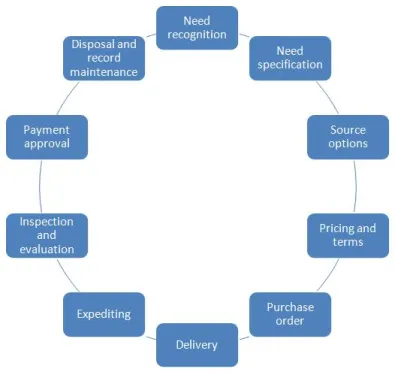Procurement vs. Purchasing: Best Practices for Effective Supply Management
- donnariekepro
- Jul 22, 2024
- 3 min read
In the realm of supply management, the terms “procurement” and “purchasing” are often used interchangeably, but they refer to distinct processes with different objectives and strategies. Understanding the difference between these functions and implementing best practices can lead to more efficient and cost-effective supply management. This blog aims to clarify the distinction between procurement and purchasing and offer actionable best practices for optimizing each process.
Understanding Procurement and Purchasing
Procurement is a strategic function that involves the entire process of acquiring goods and services. It encompasses everything from identifying needs and selecting suppliers to negotiating contracts and managing relationships. Procurement focuses on the long-term value and alignment with organizational goals, often involving strategic sourcing and supplier development.
Purchasing, on the other hand, is more tactical and focuses on the actual process of buying. This includes placing orders, managing inventory levels, and ensuring timely delivery. Purchasing is concerned with operational efficiency and often involves day-to-day management tasks that support procurement decisions.
Best Practices for Procurement
Strategic Sourcing: Develop a strategic sourcing plan that aligns with your organization’s goals. This involves analyzing your spend, identifying potential suppliers, and evaluating their capabilities. The goal is to find suppliers that offer the best value in terms of cost, quality, and service.
Supplier Relationship Management: Cultivate strong relationships with key suppliers. This can lead to better terms, improved service levels, and enhanced collaboration. Regular communication and performance reviews help ensure that suppliers meet your expectations and adapt to your changing needs.
Market Research: Stay informed about market trends and supplier innovations. This can help you make more informed decisions and identify opportunities for cost savings or quality improvements. Engaging in market research can also help you anticipate potential supply chain disruptions.
Contract Management: Develop comprehensive contracts that clearly outline expectations, deliverables, and performance metrics. Effective contract management helps mitigate risks and ensures that both parties fulfill their obligations. Regularly review and update contracts as needed.
Risk Management: Identify and assess potential risks in your supply chain. Develop contingency plans to address issues such as supplier failure, geopolitical disruptions, or fluctuating prices. A proactive approach to risk management helps ensure continuity and stability in your supply chain.
Best Practices for Purchasing
Automate Processes: Implement purchasing automation tools to streamline order placement, inventory management, and invoice processing. Automation reduces manual errors, speeds up transactions, and provides better visibility into your purchasing activities.
Monitor Inventory Levels: Use inventory management systems to track stock levels and forecast demand accurately. This helps prevent stockouts and overstock situations, ensuring that you maintain optimal inventory levels and minimize holding costs.
Vendor Selection: Choose vendors based on their reliability, pricing, and service levels. Establish criteria for evaluating vendors and use this information to make informed purchasing decisions. Regularly review vendor performance to ensure they continue to meet your requirements.
Cost Control: Implement strategies for controlling costs, such as bulk purchasing, negotiating discounts, and evaluating alternative suppliers. Regularly review your purchasing practices to identify opportunities for cost savings without compromising quality.
Compliance and Documentation: Ensure that all purchasing activities comply with organizational policies and regulations. Maintain accurate records of purchases, contracts, and communications to support audits and resolve any discrepancies that may arise.
Integrating Procurement and Purchasing
To maximize effectiveness, it’s crucial to integrate procurement and purchasing functions. This involves ensuring that procurement strategies align with purchasing activities and vice versa. Effective communication and collaboration between these functions help streamline processes, reduce redundancies, and improve overall supply chain efficiency.
Conclusion
Both procurement and purchasing play vital roles in supply management, but they serve different purposes. By understanding the distinctions and implementing best practices for each function, organizations can achieve better cost management, improve supplier relationships, and enhance overall efficiency. Strategic procurement coupled with efficient purchasing practices creates a robust supply management framework that drives long-term success and value for the organization.
SITES WE SUPPORT
SOCIAL LINKS




Comments